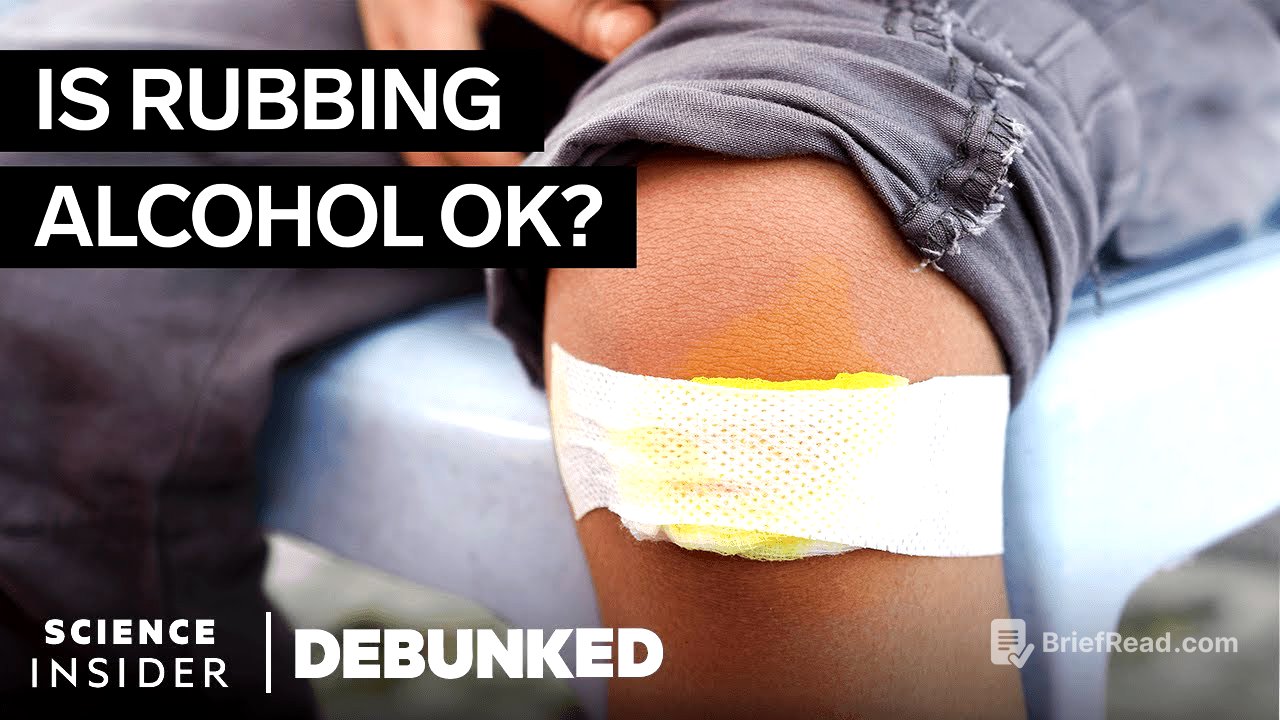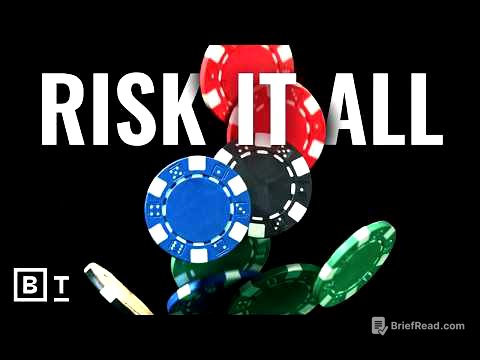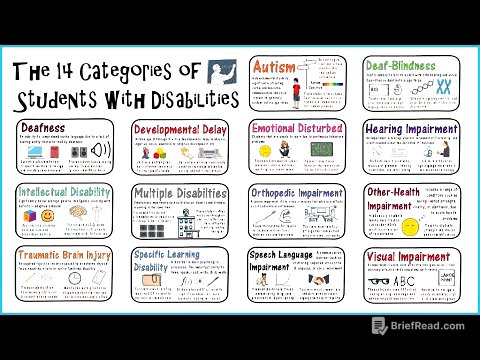TLDR;
This video debunks common first aid myths with paramedics Randy Lee and Lorena Concepcion Martinez. They address misconceptions ranging from concussion management and seizure care to snakebites and CPR, providing accurate advice and highlighting the importance of seeking professional medical help. The key takeaways include avoiding actions that could worsen the situation, such as keeping someone with a concussion awake or attempting to suck venom from a snakebite, and emphasising the value of basic first aid knowledge and prompt medical intervention.
- Keeping someone with a concussion awake is unnecessary; monitor for specific symptoms instead.
- Never put anything in the mouth of someone having a seizure.
- The Heimlich manoeuvre, not back slaps, is the primary response for choking adults.
- Sucking venom from a snakebite is ineffective; seek immediate medical attention.
- CPR can be effectively performed with chest compressions alone.
- Do not remove a sharp object from a stab wound; stabilise it and seek medical help.
- Defibrillators are user-friendly and can be used by anyone following the device's instructions.
- Butter should not be applied to burns; use cool water instead.
- Avoid rubbing frostbitten skin; warm it gradually.
- Clean wounds with soap and water, not rubbing alcohol.
- Cardiac arrest and heart attacks are distinct conditions requiring different responses.
- Avoid putting someone who has overdosed in a shower or bath; seek immediate medical assistance.
Intro [0:00]
Paramedics Randy Lee and Lorena Concepcion Martinez introduce themselves and explain that they will be debunking common first aid myths. They highlight several incorrect practices often portrayed in movies and popular culture, such as removing objects from stab wounds or slapping a choking person on the back, and aim to provide accurate first aid advice.
If someone gets a concussion, keep them awake [0:38]
It's a myth that someone with a concussion needs to be kept awake. This idea stems from the outdated belief that sleeping could lead to a coma. A concussion is a type of traumatic brain injury (TBI), and while monitoring the person is important, sleep is not dangerous. Instead, watch for signs like slurred speech, vomiting, or unsteady walking. If these symptoms don't resolve, seek medical attention to rule out internal bleeding in the brain.
You should put something into the mouth of someone having a seizure [1:25]
Putting something in the mouth of someone having a seizure is a dangerous myth. The fear that a person might swallow their tongue is unfounded; it's more likely they will clench their jaw due to muscle spasms. Inserting an object can cause dental damage, jaw fractures, or even injuries to the person trying to help. Instead, let the seizure pass, then roll the person onto their side and provide support until paramedics arrive. While most seizures resolve in 30 seconds to a minute, continuous seizures (status epilepticus) require advanced medical intervention to prevent breathing complications.
Slap a choking person on the back [2:44]
Slapping a choking person on the back is not the recommended first response for adults. While back slaps are used for choking infants and children, the Heimlich manoeuvre is more effective for adults. Encourage the person to keep coughing to clear the airway. The universal choking sign is hands clutched at the throat. If the airway becomes completely blocked, perform the Heimlich manoeuvre and call 999. The American Red Cross recommends five back blows followed by five abdominal thrusts, while the American Heart Association advises going straight to abdominal thrusts. When performing abdominal thrusts, make a fist and pull inward and upward with force just above the navel.
Always suck the venom out of a snakebite [4:37]
Sucking venom out of a snakebite is ill-advised and ineffective. Once venom enters the bloodstream, it circulates rapidly, making it impossible to extract. Avoid using a tourniquet, as it can cause more damage. Sucking on the wound will only extract a minimal amount of venom and exposes the person to infection from your mouth. Instead, call emergency services immediately and transport the person to a hospital with a venom centre that stocks appropriate antivenoms.
CPR requires mouth-to-mouth [5:52]
CPR does not necessarily require mouth-to-mouth resuscitation. Chest compressions alone can circulate blood and deliver oxygen to the brain, buying time for paramedics to arrive. Hands-only CPR is now strongly emphasised to avoid the transmission of communicable diseases. To perform CPR, expose the chest, place the palm of one hand in the centre, interlock your fingers, and push straight down about two inches for an adult, maintaining a rate of 100 compressions per minute. Consistent compressions are crucial, as any interruption reduces effectiveness. Begin CPR immediately, as irreversible brain damage can occur after about six minutes without intervention.
After getting stabbed, take out the sharp object from the body [7:13]
Removing a sharp object from a stab wound is extremely dangerous and should never be done. Removing the object will cause more tissue damage and increase bleeding. Instead, leave the object in place and stabilise it to prevent further movement, which could cause additional harm. This advice contradicts what is often shown in movies for dramatic effect.
You have to be medically trained to use a defibrillator [7:48]
You do not need to be medically trained to use a defibrillator. Automated external defibrillators (AEDs) are designed for public use and are available in many municipal buildings. Using an AED is simple: open the device, press the power button, and follow the step-by-step voice prompts. The AED will guide you through the process, including pad placement, and will analyse the heart rhythm to determine if a shock is needed. If the person is unresponsive and potentially in cardiac arrest, use the AED as quickly as possible. The device will not administer a shock if the person is alive and does not need one.
Put butter on a burn to heal it [9:04]
Applying butter to a burn is not a helpful remedy. Butter traps heat, which can worsen the burn. Instead, cool the burn with cool (not cold) water to stop the burning process, regardless of the burn's severity. Keep the area clean and sterile, and seek medical care.
If you get frostbite on your hands, rub them together to warm them up [9:34]
Rubbing frostbitten skin is not recommended. Friction can cause more damage to the skin tissue and cells. Instead, warm the affected area slowly by moving to a warmer environment and removing any wet clothing. Frostbite is characterised by waxy, puffy, and blistered skin. If you suspect frostbite, seek emergency medical treatment to prevent irreversible damage.
You should clean your wounds with rubbing alcohol [10:35]
Cleaning wounds with rubbing alcohol is not advisable. Rubbing alcohol can be very painful and is unnecessary. Instead, use simple soap and water, or antibacterial soap if available. Alcohol can dry out the wound, which is not conducive to healing. Keep the wound moist and covered with a bandage for a day or two to control bleeding. After that, apply a triple antibiotic ointment and allow the wound to air dry to promote scabbing, which is a natural protective barrier.
Cardiac arrest and a heart attack are the same thing [11:29]
Cardiac arrest and a heart attack are not the same thing. Cardiac arrest means the heart has stopped beating, resulting in unconsciousness and absence of breathing. CPR is necessary in this situation. A heart attack, on the other hand, involves a blockage in the heart, causing chest pain and shortness of breath. A person experiencing a heart attack is usually conscious and able to seek medical attention. Common symptoms include chest pain, shortness of breath, and excessive sweating. In either case, call 999 immediately.
If you witness a drug overdose, put the person in the shower or bath [12:09]
Putting someone who has overdosed in the shower or bath is not the right approach. A sudden change in temperature can disrupt the body's homeostasis. Additionally, it complicates treatment for paramedics. Paramedics carry medications like Narcan to counteract opioid overdoses and other drugs to address different types of overdoses. It's crucial to provide accurate information about the drugs taken to ensure appropriate treatment.









